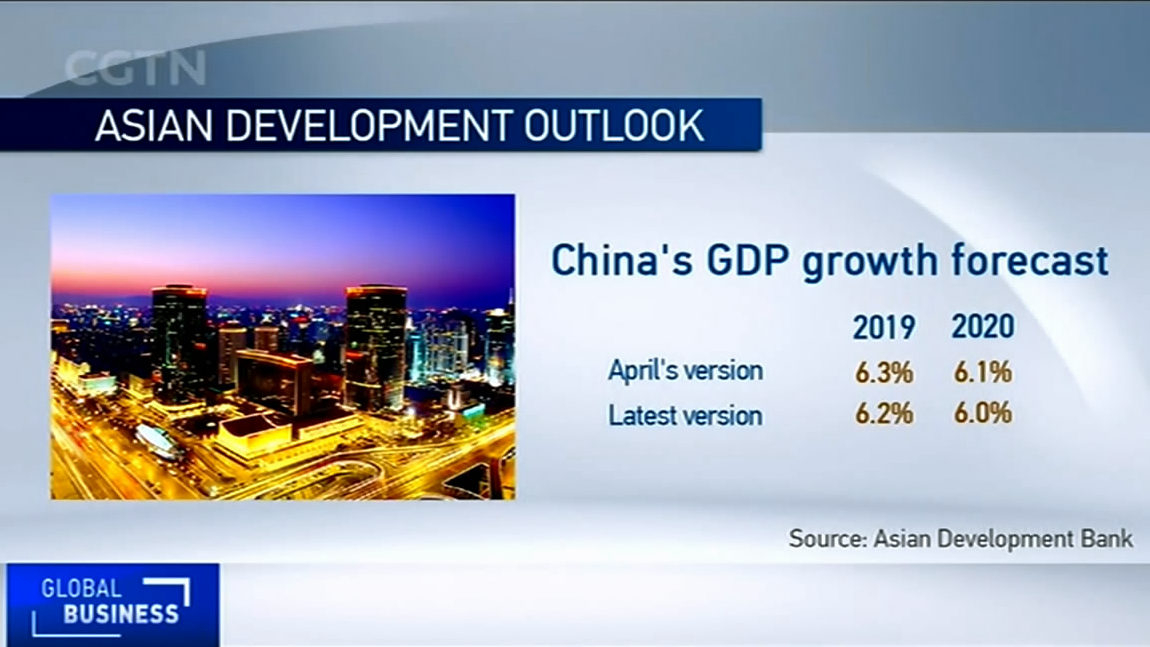02:22

Asian Development Bank (ADB) just released its latest update of Asian Development Outlook (ADO) 2019, saying that economic growth in developing Asia remains robust, but prospects have further dimmed and risks to the region's economies are rising as trade and investment weaken.
The report further elaborates that the newly lowered forecasts reflect gloomier prospects for international trade due in part to escalating trade tensions between China and the United States, as well as slowing economic growth in advanced economies and the large economies of developing Asia.
Yolanda Fernandez Lommen, Country Director of PRC China at ADB, told CGTN that the U.S. and China are the two largest economies in the world, so what happens between them is actually affecting the entire world.
"For that reason, we really hope the ongoing trade dialogue and negotiations would continue and a solution can be found. Because the economic history tells us nobody wins in a trade war, it would have bad implications in the entire global economic system and it's not the desired outcome. So we truly hope the negotiation comes to a good end," she added.
Specifically, the report forecasts economic growth in the 45 countries of developing Asia at 5.4 percent this year before nudging up to 5.5 percent in 2020.

ADB's latest forecast for China's economic growth. /CGTN Photo
ADB's latest forecast for China's economic growth. /CGTN Photo
The report revises downward its forecast for China to 6.2 percent this year and 6.0 percent in 2020 – which are slightly below its April projections of 6.3 percent for 2019 and 6.1 percent growth for 2020.
"China's economy will see growth stabilize for the remainder of this year, and moderate slightly in 2020, supported by a gradual loosening in monetary policy, increased government spending, and solid growth in the housing market," said ADB Chief Economist Yasuyuki Sawada.
Meanwhile, the chief economist considers that "domestic consumption will be the main driver of growth going forward with the main downside risk stemming from a potential intensification of the trade conflict with the U.S."
Minsoo Lee, Head of Economics Unit of PRC China at Asian Development Bank, told CGTN that China is on the verge of making a transition, from high growth to high quality development, with the pursuit of well-being and better quality of life.
"Over the next decade, China is expected to make significant transition into high-income modern country with more innovation and advanced technology. The policy maker understands long-run plan, as the economic transition that includes rebalancing of domestic structure is also reflected in the country's long-term plan to transform to a modern China." Lee said.
Lee also emphasized that China has done a great job in rebalancing the economy and further opening up the market, while the deleveraging task that's been highlighted years ago also needed to be addressed.
For China's domestic economy, the report also cautioned that containing accumulated debt will become more challenging over time, given that local governments have high spending needs but a weak revenue base.
Local government fiscal revenues are likely to be eroded going forward following the recent cuts in value-added tax (VAT) rates where local governments receive half of all VAT revenues. To tackle this, there should be accelerated reforms to fiscal relations between central and local governments.